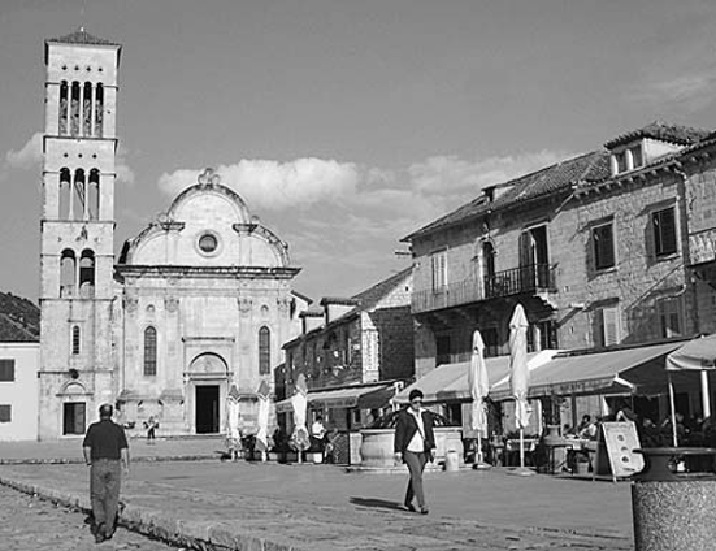Travel Reference
In-Depth Information
axis. To the left lived the well-to-do patricians, protected within the city wall (from the fort-
ress, crenellated walls reach down to embrace this neighborhood—not quite visible from
here). To the right, outside the wall, dwelled the humble plebeians—who worked hard and
paid high taxes, but had no say in government. In the 16th century, these two populations
came to blows, scuffling sporadically over the course of a century. The Venetians finally
decided enough was enough and sent a moderator to restore peace. As a symbol of the re-
conciliation, part of the Arsenal building was converted into a
communal theater.
Built in
1612, this was the first municipal theater in Europe. Like the Loggia (described next), it has
recently undergone an extensive renovation, which may still be underway during your visit;
when finished, it may house a museum of Hvar history.
AcrossthesquarefromtheArsenal,thebuildingwiththearchesandtoweristhe
Loggia,
all that remains of a 15th-century palace for the rector (who ruled the island as a repres-
entative of Venice). This was the town's court of justice, and important decisions were an-
nounced from the stepped pillar in front (with the flagpole). This pillar also served as the
town pillory, for publicly humiliating prisoners. During Habsburg control in the early 20th

